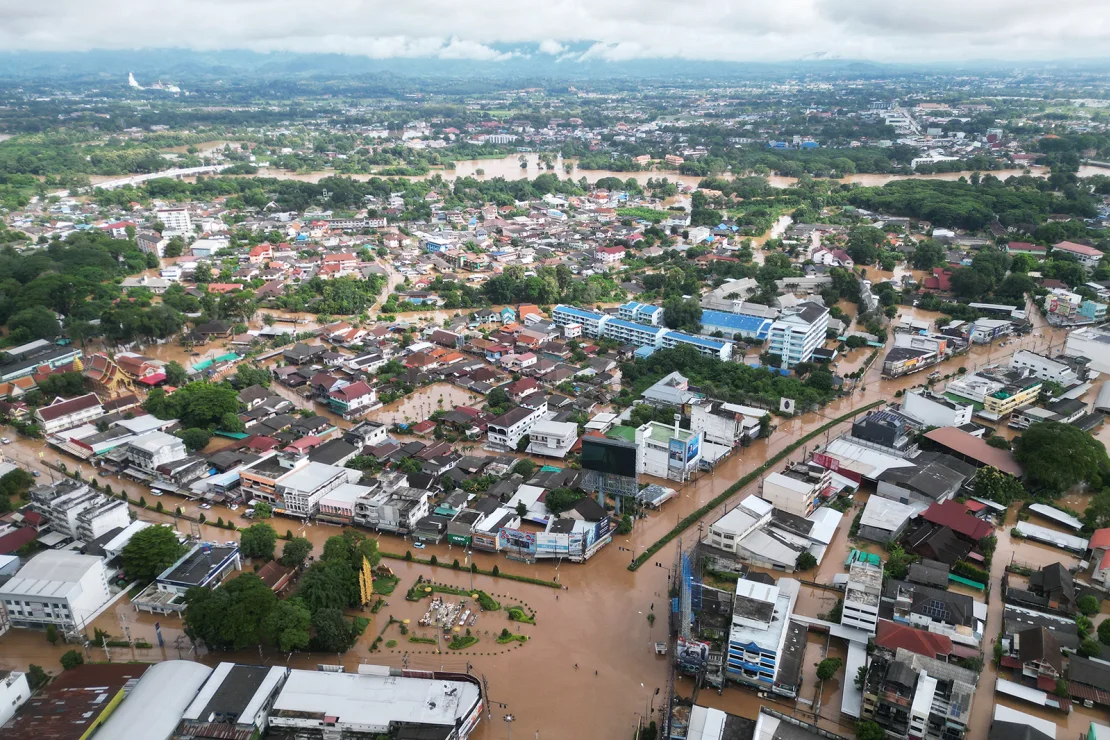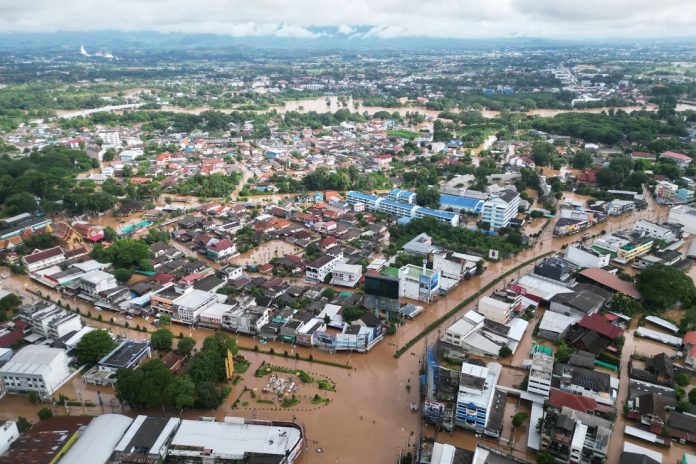ไต้ฝุ่นยากิ ซึ่งเป็นพายุที่รุนแรงที่สุดในเอเชียปีนี้ ได้คร่าชีวิตผู้คนไปหลายสิบรายนับตั้งแต่พัดผ่านจีนตอนใต้และเอเชียตะวันออกเฉียงใต้เมื่อสัปดาห์ที่แล้ว โดยทิ้งร่องรอยแห่งการทำลายล้างด้วยฝนตกหนักและลมแรง
หลังจากพัดถล่มฟิลิปปินส์ ซึ่งทำให้มีผู้เสียชีวิตมากกว่าสิบคน พายุก็เคลื่อนไปทางตะวันตกสู่จีนตอนใต้ จากนั้นกระทบต่อบางส่วนของเวียดนาม ไทย เมียนมาร์ และลาว
เกือบหนึ่งสัปดาห์หลังจากพายุพัดขึ้นฝั่ง หลายฟาร์มและหมู่บ้านในภาคเหนือของเวียดนามและไทยที่อยู่ใกล้เคียงยังคงจมอยู่ใต้น้ำ ขณะที่ชุมชนต่าง ๆ ยังคงพยายามรับมือกับน้ำท่วมและความเสี่ยงจากดินถล่ม
ในเวียดนาม ยอดผู้เสียชีวิตจากพายุเพิ่มขึ้นเป็นอย่างน้อย 226 ราย เนื่องจากพายุ ดินถล่ม และน้ำป่าไหลหลากที่เกิดขึ้นจากเหตุการณ์นี้ ตามรายงานของสำนักงานภัยพิบัติของรัฐบาลเมื่อวันพฤหัสบดีที่ผ่านมาตามรายงานของรอยเตอร์ พายุได้สร้างความเสียหายอย่างกว้างขวางต่อโครงสร้างพื้นฐานและโรงงาน
วิดีโอที่บันทึกโดยกล้องติดหน้ารถเมื่อต้นสัปดาห์นี้ แสดงให้เห็นเหตุการณ์ขณะที่สะพานเหล็กพังลงเหนือแม่น้ำแดงที่น้ำท่วมในจังหวัดฟู้เถาะ ประเทศเวียดนาม ทำให้รถหลายคันตกลงไปในกระแสน้ำเชี่ยวกราก
ฝนตกหนักยังทำให้จังหวัดเชียงรายทางภาคเหนือของประเทศไทยจมอยู่ใต้น้ำ บ้านเรือนและหมู่บ้านริมแม่น้ำถูกท่วม ทำให้การช่วยเหลือผู้ประสบภัยเป็นไปได้อย่างยากลำบาก
มีผู้เสียชีวิตอย่างน้อย 33 รายทั่วประเทศไทยตั้งแต่กลางเดือนสิงหาคมจากเหตุการณ์ที่เกี่ยวข้องกับฝน โดยในสัปดาห์นี้มีผู้เสียชีวิตอย่างน้อย 9 รายหลังจากพายุยากิพัดผ่าน รอยเตอร์รายงานโดยอ้างอิงข้อมูลจากรัฐบาลท้องถิ่น
นักวิทยาศาสตร์เตือนมาเป็นเวลานานแล้วว่า มหาสมุทรที่ร้อนขึ้นทำให้พายุมีความรุนแรงและอันตรายมากขึ้น แม้ว่าประเทศพัฒนาแล้วจะมีความรับผิดชอบมากกว่าต่อวิกฤติภูมิอากาศที่เกิดจากมนุษย์ แต่ประเทศกำลังพัฒนาและรัฐที่เป็นเกาะเล็ก ๆ กลับได้รับผลกระทบที่เลวร้ายที่สุด
Typhoon Yagi: Asia’s most powerful storm submerges parts of Vietnam and Thailand

Typhoon Yagi, Asia’s most powerful storm this year, has left dozens dead since sweeping across southern China and Southeast Asia last week, leaving a trail of destruction with its intense rainfall and powerful winds.
After hitting the Philippines, where it killed more than a dozen people, it churned westwards towards southern China and shortly after parts of Vietnam, Thailand, Myanmar and Laos.
Nearly a week since it made landfall, many farms and villages in northern parts of Vietnam and neighboring Thailand remain under water as communities struggle to cope with severe flooding and the looming threat of landslides.
In Vietnam, the death toll has risen to at least 226 as a result of the storm and the landslides and flash floods it triggered, the government’s disaster agency said Thursday, according to Reuters. The storm caused widespread damage to infrastructure and factories.
Video captured by a car’s dashcam earlier this week showed the moment a steel bridge collapsed over the engorged Red River in Vietnam’s Phu Tho province, plunging drivers into the raging waters.
The downpours also inundated Thailand’s northern province of Chiang Rai, submerging homes and riverside villages, making rescue efforts difficult.
At least 33 people have died across Thailand since mid-August due to rain-related incidents, with at least nine deaths this week after Yagi, Reuters reported citing the local government.
Storms are being made more intense and deadlier by the warming ocean, scientists have long warned. While developed nations bear a greater historical responsibility for the human-induced climate crisis, developing nations and small-island states are suffering the worst impacts.
Story by Kathleen Magramo, photo curation by Noemi Cassanelli, CNN

















